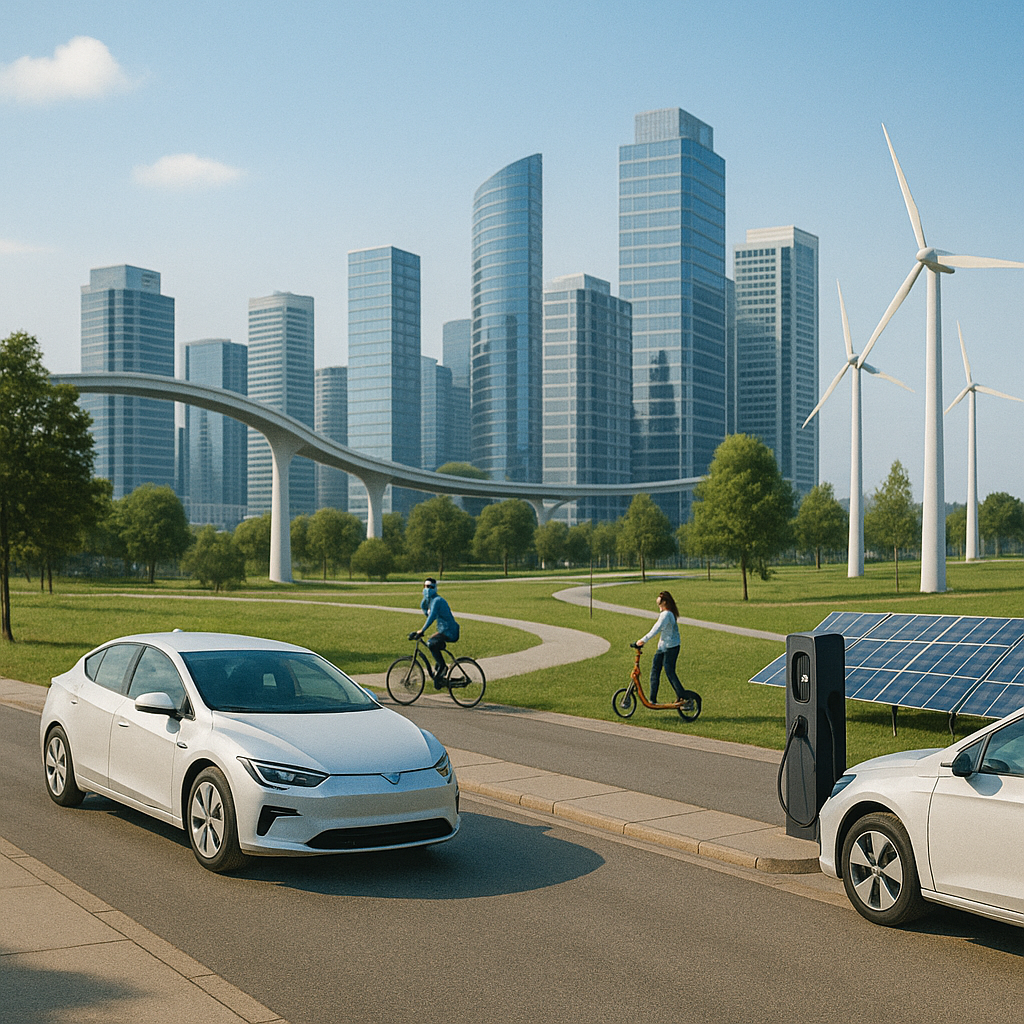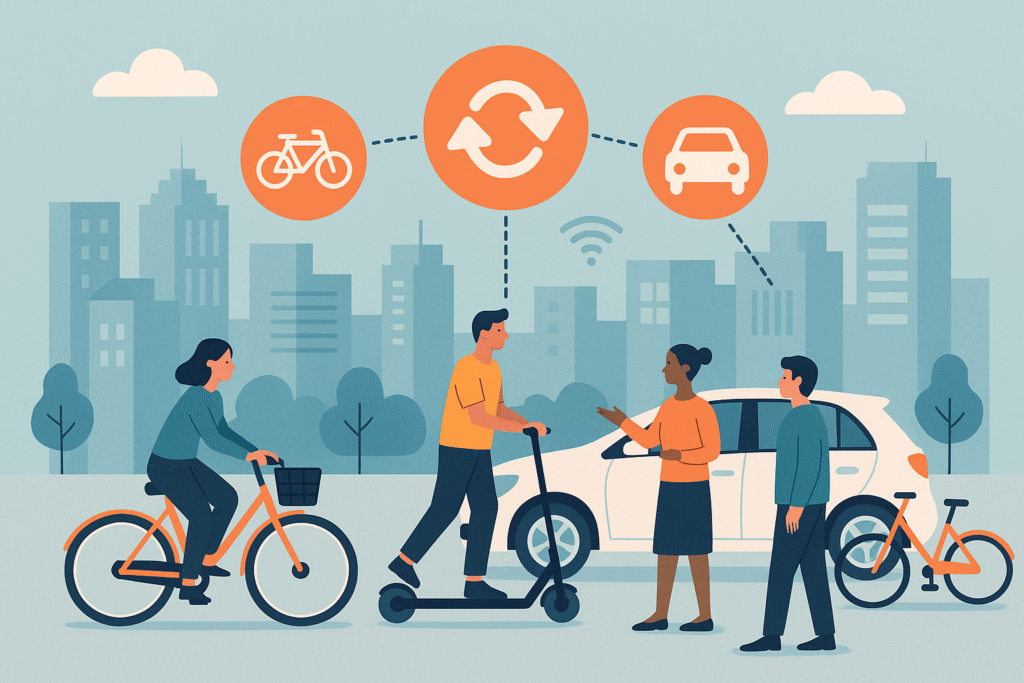As urban populations grow and environmental concerns mount, shared mobility solutions are playing a crucial role in transforming the way people move. From reducing costs to fostering community engagement, shared mobility services like car-sharing and bike-sharing are improving everyday life in meaningful ways.
Here’s how:
1. Reducing Transportation Costs and Traffic Congestion
 Owning a personal vehicle comes with high costs, including fuel, insurance, maintenance, and parking fees. Shared mobility alternatives like car-sharing and ride-sharing services allow people to access transportation only when needed, significantly lowering expenses. Additionally, shared mobility options offer flexibility, eliminating the long-term financial commitment of owning a vehicle while ensuring reliable and affordable transport solutions.
Owning a personal vehicle comes with high costs, including fuel, insurance, maintenance, and parking fees. Shared mobility alternatives like car-sharing and ride-sharing services allow people to access transportation only when needed, significantly lowering expenses. Additionally, shared mobility options offer flexibility, eliminating the long-term financial commitment of owning a vehicle while ensuring reliable and affordable transport solutions.
In addition, shared mobility helps reduce traffic congestion by optimizing vehicle usage. Fewer private cars on the road mean less time stuck in traffic, shorter commute durations, and more efficient urban transportation systems. Cities like London and New York are actively expanding shared mobility networks to ease congestion and improve travel efficiency. Many urban centers are also investing in high-tech solutions, such as AI-driven ride-sharing algorithms, to further enhance traffic flow and ensure that shared transportation becomes an integral part of urban planning.
2. Lowering Carbon Emissions and Promoting Sustainability
 Personal vehicles contribute significantly to greenhouse gas emissions. Shared mobility services help combat climate change by encouraging people to use environmentally friendly transport options like electric car-sharing, bike-sharing, and e-scooter programs. Many cities are integrating shared electric vehicle fleets and expanding cycling infrastructure to further reduce carbon footprints.
Personal vehicles contribute significantly to greenhouse gas emissions. Shared mobility services help combat climate change by encouraging people to use environmentally friendly transport options like electric car-sharing, bike-sharing, and e-scooter programs. Many cities are integrating shared electric vehicle fleets and expanding cycling infrastructure to further reduce carbon footprints.
For instance, studies show that each shared vehicle can replace up to 15 privately owned cars, leading to lower fuel consumption and reduced pollution. In addition to the reduction in emissions, car-sharing services are increasingly adopting electric vehicles, further lowering the environmental impact. Moreover, shared bike and e-scooter programs offer users an emission-free mode of transport, promoting healthier and cleaner cities. By choosing shared mobility, users play an active role in promoting sustainable urban living.
Governments and organizations are also taking proactive steps by implementing policies that encourage shared transport over single-occupancy vehicles. Incentives such as reduced parking fees, tax breaks for shared mobility users, and investment in smart mobility hubs are helping to accelerate this transition to a greener future.
3. Fostering Social Inclusion and Community Interaction
 Shared mobility is more than just a transportation alternative—it’s also a way to build stronger communities. Carpooling and ride-sharing services encourage social interactions, connecting people who might not otherwise meet. Bike-sharing and public transport integration enhance mobility access for underserved communities, ensuring that transportation is inclusive and accessible to all.
Shared mobility is more than just a transportation alternative—it’s also a way to build stronger communities. Carpooling and ride-sharing services encourage social interactions, connecting people who might not otherwise meet. Bike-sharing and public transport integration enhance mobility access for underserved communities, ensuring that transportation is inclusive and accessible to all.
Cities with well-developed shared mobility systems report increased social cohesion, as these services help bridge gaps between different socio-economic groups. For example, affordable shared transport solutions provide better access to job opportunities, healthcare, and education, ultimately contributing to greater social equity.
Additionally, community-based shared mobility initiatives, such as neighborhood car-sharing programs and cooperative bike-sharing schemes, are gaining traction. These grassroots solutions foster a sense of shared responsibility and belonging, reinforcing the importance of sustainable mobility as a collective effort. Public-private partnerships are also emerging, working towards expanding shared mobility access in suburban and rural areas where traditional transport infrastructure may be lacking.
The Future of Shared Mobility
As shared mobility continues to evolve, its benefits will only expand. Reduced costs, lower emissions, and enhanced community connectivity make it an essential part of the urban mobility landscape. Governments, businesses, and individuals alike must support and embrace these solutions to create more sustainable and inclusive cities.
Advancements in technology, such as autonomous shared vehicles, AI-driven transportation models, and smart infrastructure, are expected to revolutionize shared mobility further. As more people embrace these options, cities will witness a reduction in private car ownership, leading to cleaner air, more public spaces, and a shift toward a more efficient urban lifestyle.
Are you using shared mobility in your daily life? Let us know your experience in the comments!





